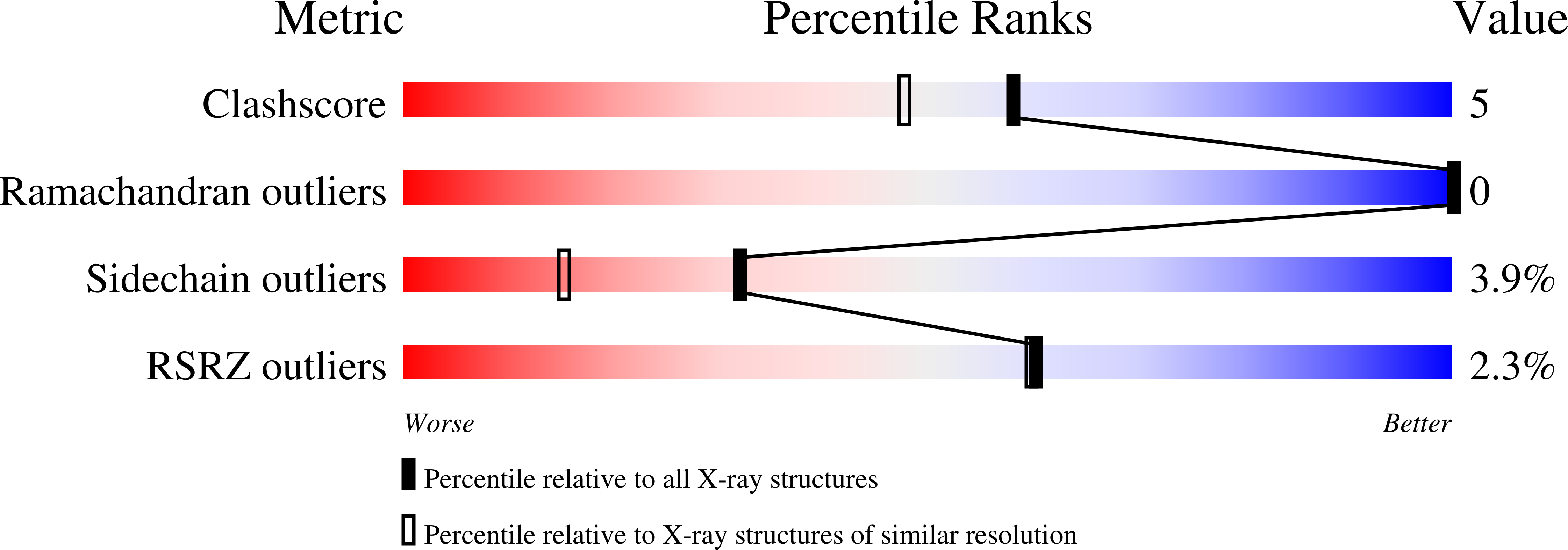X-ray structure of turkey-egg lysozyme complex with tri-N-acetylchitotriose. Lack of binding ability at subsite A.
Harata, K., Muraki, M.(1997) Acta Crystallogr D Biol Crystallogr 53: 650-657
- PubMed: 15299852
- DOI: https://doi.org/10.1107/S0907444997005362
- Primary Citation of Related Structures:
1JEF - PubMed Abstract:
The turkey-egg lysozyme (TEL) complex with tri-N-acetylchitotriose [(GlcNac)3] was co-crystallized from 1.5% TEL and 2 mM (GlcNac)3 at pH 4.2. The crystal structure was determined by molecular replacement and refined to an R value of 0.182 using 10-1.77 A data. The (GlcNac)3 molecule occupies the subsites A, B and C. At the subsites B and C, the sugar residues are bound in a similar manner to that found in the hen-egg lysozyme (HEL) complex. In contrast, the GlcNac residue at the subsite A is exposed to bulk solvent and has no contact with the protein molecule because the active residue Asp101 in HEL is replaced by Gly in TEL. A sulfate ion is bound in the vicinity of subsite B and forms hydrogen bonds with the sugar residue and the guanidino group of Arg61, assisting the binding of the sugar residue to subsite B. The active-site cleft of TEL is narrower than that of native TEL, thus attaining the best fit of the (GlcNac)3 molecule. The lack of binding ability of subsite A is discussed in relation to the catalytic properties of TEL. The result suggests that the cleavage pattern of oligosaccharide substrates in the catalytic reaction is regulated by the protein-sugar interaction at subsite A.
Organizational Affiliation:
National Institute of Bioscience and Human Technology, Tsukuba, Ibaraki, Japan. harata@nibh.go.jp





















